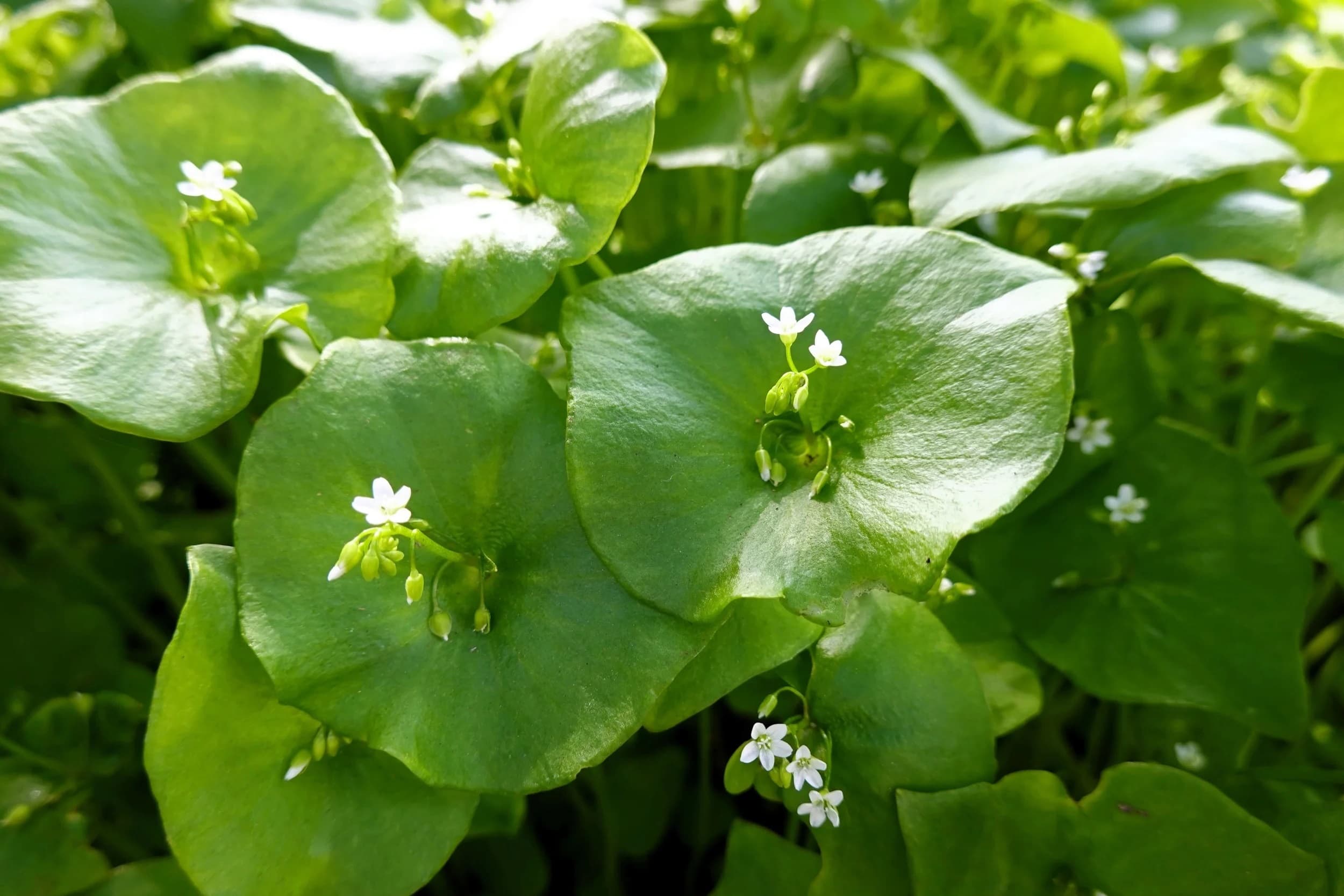
Winter purslane, also known as miner's lettuce, is a leafy green that thrives in cooler months. But what makes this plant so special? Winter purslane is packed with nutrients, easy to grow, and versatile in the kitchen. Its mild, slightly tangy flavor makes it a favorite among chefs and home cooks alike. Whether you're tossing it in a salad, blending it into a smoothie, or sautéing it as a side dish, this green adds a fresh touch to any meal. Plus, it's a hardy plant that can withstand frost, making it a reliable crop for winter gardens. Ready to learn more? Let's dive into 15 fascinating facts about winter purslane!
Key Takeaways:
- Winter Purslane, also known as miner's lettuce, is a cold-resistant leafy green packed with nutrients. It's easy to grow and can be used in salads, soups, smoothies, stir-fries, and even pesto.
- Winter Purslane, with its mild, slightly tangy flavor, is rich in vitamins A and C, iron, and calcium. It's a versatile plant that can thrive in cooler climates and adds a decorative touch to dishes with its edible flowers.
What is Winter Purslane?
Winter Purslane, also known as miner's lettuce, is a leafy green vegetable that thrives in cooler climates. It's packed with nutrients and has a mild, slightly tangy flavor. Let's dive into some interesting facts about this versatile plant.
-
Scientific Name: Winter Purslane's scientific name is Claytonia perfoliata. It belongs to the Montiaceae family.
-
Origin: This plant is native to North America, particularly the western regions. Indigenous peoples and early settlers used it as a food source.
-
Nutrient-Rich: Winter Purslane is loaded with vitamins A and C, iron, and calcium. It's a great addition to a healthy diet.
-
Cold-Resistant: Unlike many other leafy greens, Winter Purslane thrives in cold weather. It can even grow in temperatures as low as 20°F (-6°C).
-
Edible Flowers: Not just the leaves, but the flowers of Winter Purslane are also edible. They add a decorative touch to salads and dishes.
Growing Winter Purslane
Growing Winter Purslane is relatively easy, making it a favorite among gardeners. Here are some facts about cultivating this hardy plant.
-
Soil Preference: Winter Purslane prefers well-drained, sandy soil. It can tolerate poor soil conditions better than many other greens.
-
Sowing Time: The best time to sow Winter Purslane seeds is in late summer or early fall. This timing allows the plant to establish before winter sets in.
-
Sunlight Needs: While it can grow in partial shade, Winter Purslane thrives in full sunlight. More sunlight results in more robust growth.
-
Watering: This plant doesn't require much water. Overwatering can lead to root rot, so it's best to keep the soil slightly moist.
-
Harvesting: You can start harvesting the leaves when the plant reaches about 4 inches in height. Regular harvesting encourages new growth.
Culinary Uses of Winter Purslane
Winter Purslane is not just nutritious but also versatile in the kitchen. Here are some ways you can use it in your meals.
-
Salads: The most common use for Winter Purslane is in salads. Its mild flavor pairs well with various dressings and other vegetables.
-
Soups: Add Winter Purslane to soups for a nutrient boost. It wilts quickly, so add it just before serving.
-
Smoothies: Blend Winter Purslane into smoothies for an extra dose of vitamins and minerals. Its mild taste won't overpower other ingredients.
-
Stir-Fries: This green can be added to stir-fries. It cooks quickly and adds a nice texture to the dish.
-
Pesto: Use Winter Purslane as a base for pesto. Blend it with garlic, nuts, and olive oil for a unique twist on the classic sauce.
Winter Purslane: A Hidden Gem
Winter purslane, also known as miner's lettuce, is a versatile and nutritious plant that deserves a spot in your garden. Its high vitamin C content and antioxidant properties make it a great addition to salads, soups, and smoothies. This hardy plant thrives in cooler temperatures, making it perfect for winter gardening.
Growing winter purslane is simple. It requires minimal care and can even grow in poor soil conditions. Plus, its succulent leaves and delicate flowers add a touch of beauty to any garden.
Incorporating winter purslane into your diet can boost your health and add variety to your meals. Whether you're a seasoned gardener or just starting out, this plant is a fantastic choice. Give winter purslane a try, and you'll soon see why it's a hidden gem in the world of edible plants.
Frequently Asked Questions
Was this page helpful?
Our commitment to delivering trustworthy and engaging content is at the heart of what we do. Each fact on our site is contributed by real users like you, bringing a wealth of diverse insights and information. To ensure the highest standards of accuracy and reliability, our dedicated editors meticulously review each submission. This process guarantees that the facts we share are not only fascinating but also credible. Trust in our commitment to quality and authenticity as you explore and learn with us.


